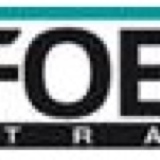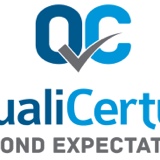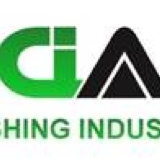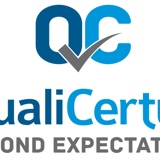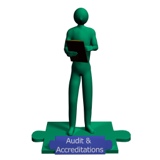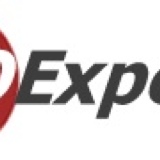Information
-
Document No.
-
Audit Title
-
Client / Site
-
Conducted on
-
Prepared by
-
Location
-
Personnel
Audit Preparation
-
Review corrective actions for previous IA findings
-
Review corrective actions for previous EA findings
-
Review corrective actions for any customer complaints
-
Review corrective actions for any customer audit findings
4.1 General Requirements
-
Has the organization established, documented, implemented and maintained a quality management system?<br>
-
Does the organization continually improve the effectiveness of its quality management system in accordance with the requirements of this International Standard?<br>
-
Has the organization:<br>determined the processes needed for the quality management system and their application throughout the organization (see 1.2)?
-
determined the sequence and interaction of these processes?<br>
-
determined criteria and methods needed to ensure that both the operation and control of these processes are effective?
-
ensured the availability of resources and information necessary to support the operation and monitoring of these processes?<br>
-
monitored, measured where applicable, and analysed these processes?<br>
-
implemented actions necessary to achieve planned results and continual improvement of these processes?
-
Are these processes managed by the organization in accordance with the requirements of this International Standard?<br>
-
Where the organization chooses to outsource any process that affects product conformity to requirements, has the organization ensured control over such processes?<br>
-
Is the type and extent of control of such outsourced processes defined within the quality management system?<br>
4.2.1 Documentation Requirements - General
-
Has the organization documented their quality management system?<br>
-
Does the documentation include documented statements of a quality policy and quality objectives?<br>
-
a quality manual?<br>
-
documented procedures and records required by this International Standard?
-
Control of documents?<br>
-
Control of quality records?<br>
-
Internal audits?<br>
-
Control of non-conformity?<br>
-
Corrective action?<br>
-
Preventive action?<br>
-
Documents, including records, determined by the organization to be necessary to ensure the effective planning, operation and control of its processes?<br>
4.2.2 Quality Manual
-
Has the quality manual been established?<br>
-
Is the quality manual maintained?<br>
-
Does the quality manual include the scope of the quality management system? <br>
-
Details of and justification for any exclusions (see 1.2)?
-
the documented procedures established for the quality management system, or reference to them?<br>
-
a description of the interaction between the processes of the quality management system?<br>
5.3 Quality Policy
-
Does top management ensure that the quality policy is appropriate to the purpose of the organization?<br>
-
includes a commitment to comply with requirements <br>
-
and continually improve the effectiveness of the quality management system?<br>
-
provides a framework for establishing and reviewing quality objectives?<br>
-
is communicated and understood within the organization?<br>
-
is reviewed for continuing suitability?<br>
8.2.2 Internal Audit
-
Does the organization conduct internal audits at planned intervals<br>
-
to determine whether the quality management system conforms to the planned arrangements (see 7.1)? to the requirements of this International Standard? and to the quality management system requirements established by the organization?<br>
-
is effectively implemented and maintained?<br>
-
Has an audit programme been planned, taking into consideration the status and importance of the processes and areas to be audited,<br>
-
as well as the results of previous audits?<br>
-
Have the audit criteria, scope, frequency and methods been be defined?<br>
-
Does the selection of auditors and conduct of audits ensure objectivity and impartiality of the audit process?<br>
-
Does the audit programme ensure that auditors shall not audit their own work?<br>
-
Have the responsibilities and requirements for planning and conducting audits, establishing records and reporting results been defined in a documented procedure?<br>
-
Are records of the audits and their results maintained (see 4.2.4)?<br>
-
Does the management responsible for the area being audited ensure that any necessary corrections and corrective actions are taken without undue delay to eliminate detected nonconformities and their causes?
-
Do follow-up activities include the verification of the actions taken and the reporting of verification results (see 8.5.2)?<br>
8.5.1 Continual improvement
-
Does the organization continually improve the effectiveness of the quality management system through the use of the quality policy, quality objectives, audit results, analysis of data, corrective and preventive actions and management review?<br>
8.5.2 Corrective action
-
Does the organization take action to eliminate the causes of nonconformities in order to prevent recurrence?<br>
-
Are corrective actions appropriate to the effects of the nonconformities encountered?<br>
-
Has a documented procedure been established to define requirements for reviewing nonconformities (including customer complaints)?<br>
-
determining the causes of nonconformities?<br>
-
evaluating the need for action to ensure that nonconformities do not recur?<br>
-
determining and implementing action needed?<br>
-
records of the results of action taken (see 4.2.4)?<br>
-
reviewing the effectiveness of the corrective action taken?<br><br><br><br><br><br>
8.5.3 Preventive action
-
Has the organization determined action to eliminate the causes of potential nonconformities in order to prevent their occurrence?<br>
-
Are preventive actions appropriate to the effects of the potential problems?<br>
-
Has a documented procedure been established to define requirements for determining potential nonconformities and their causes?<br>
-
evaluating the need for action to prevent occurrence of nonconformities?<br>
-
determining and implementing action needed?<br>
-
records of results of action taken (see 4.2.4)?<br>
-
reviewing the effectiveness of the preventive action taken?<br>
Signatures
-
Auditor
-
Name
-
Auditee
-
Name
